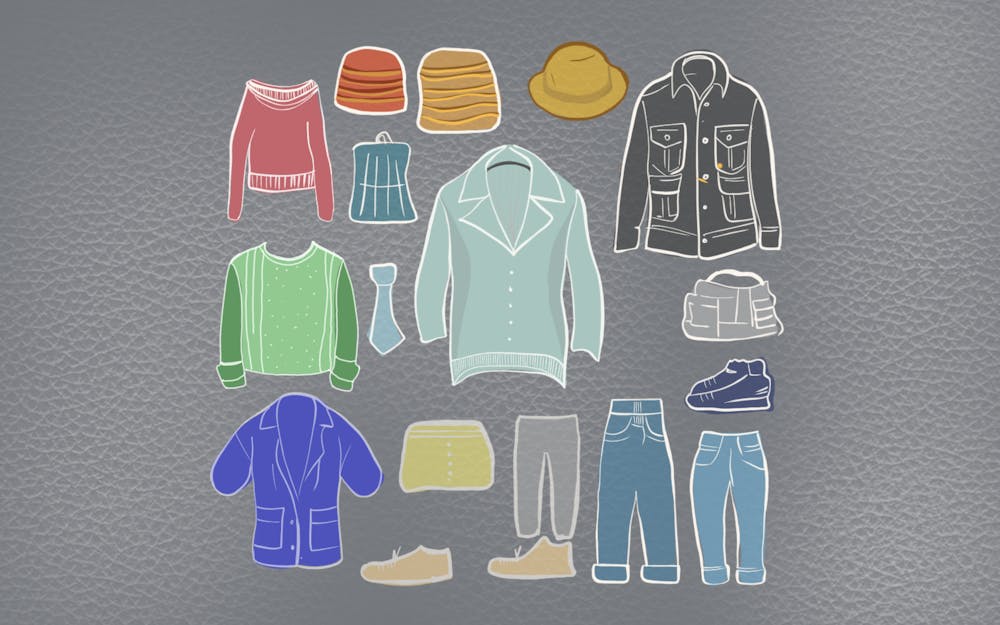When I was in middle school, I only wore t-shirts and leggings. Every morning when I got dressed, I felt tired and weak. I didn’t like the way I looked, nor did I feel good about my day. I was insecure, and even though I wanted to wear nicer clothes, I never did — I was afraid of catching other people’s attention by looking “too dressy.”
Then comes March of 2020. The pandemic kept everyone at home, and online school became the norm. This was a time when casual clothes took over. Through the first couple months of COVID-19, I still wore the same outfits, but once my freshman year of high school started, I didn’t want to be the same anymore. Although it was tempting to stay in my pajamas all day, I decided to start dressing up. No one could see me, so I could change my style without anyone noticing.
And that’s what I did. I discovered my style — business chic and cute — and it stuck. It drastically changed my outlook on life. I felt good about the way I looked, and I was ready for the day. I found that my focus strengthened from being in an outfit that made me feel confident. I stopped caring about what others thought of me, and I found it fun to dress up.
As I looked around me, though, a question always arose: why isn’t anyone else dressing up, even though it seems to have so many positive outcomes? I found out from my peers that many people think of dressing up as a burden rather than a benefit.
Dressing up is followed by many misconceptions that I want to clear up, and I want to present how you can dress up in a way that best suits you and your style.
Misconception No. 1:
“Dressing up is uncomfortable.” I have often heard that wearing something nice automatically means that it will be uncomfortable and painful, when in fact, it can be the opposite!
I used to think this too, avoiding skirts and dresses at all costs because I thought they were too girly and uncomfortable. But when I decided to try wearing them, I found them to be cute and fun to wear, as well as comfortable.
Dressing up doesn’t have to be stuffing yourself into a cumbersome dress or a stiff suit. Comfort is one of my top priorities, as it is for many other people, and that’s OK! Comfort should always be a high priority, but not the only priority. There are so many options out there that can be comfortable and fashionable, it just takes some time to find them.
And it doesn’t end there. You can dress up in literally anything. I’ve observed lots of people wearing jeans with a crop top or a T-shirt, and it looks nice. But I think it can go a step further. A fun jacket or some nice jewelry can really enhance an outfit, and finding little ways to spice up a look can instantly make someone stand out and feel dressy.
Misconception No. 2:
“Dressing up is so expensive!” OK, this may be true in some cases, but not all the time. Yes, if you want to wear nice pants or a formal dress, it may get a little pricey, but there are tons of other ways to get nice-looking clothes without spending a fortune.
My sister has a very distinct style: think of wild colors, crazy patterns and an artsy aesthetic with hints of vintage flare. Although some of her clothing items are on the more expensive side, she is a queen of finding gems at Goodwill. She beelines for the clearance section every time we go to a clothing store, and she winces at the thought of buying something over $10. She expertly pairs her clothes together in the wildest ways, but they always work.
Target can be another great resource for buying nice clothes for a cheaper price. I have found dresses and nice pants for around $20, and they last a long time. Amazon is also a good resource, as it has many nice items for a lower price. You can find pencil skirts or dress pants for less than $30.
Now that some misconceptions are cleared up, let me share a couple reasons why dressing up can be beneficial to you.
First, dressing up can boost your confidence. According to The Science Daily “The psychologists conclude that the strong link between clothing and mood state suggests we should put on clothes that we associate with happiness, even when feeling low.” Dressing well increases productivity, and making the effort to get dressed in something nice puts you in the right frame of mind.
People also appreciate the effort to dress nicely. People will pay more attention to someone that dresses well. I had a teacher in high school that loved the fact that I dressed up. She would always compliment my outfit and would immediately assume that if I was dressing well, it meant I had something important that day. Two years later, I had her for another class and she remembered me.
I know being noticed is scary, but honestly, it’s what you should want. First impressions are everything, and making it a point to show up to an important event in a professional-looking, cool outfit will draw people’s attention. This can be extremely helpful in job interviews or important meetings with well-known people, because it will get you on their radar. An article by Forbes states “Humans are innately judgmental and quick to piece together an assumption solely based on what we see. So, looking sharp and professional signals that you are, in fact, sharp and professional.”
Finally, dressing well can be fun! Experimenting with various items of clothing is something that everyone can enjoy. Even if you don’t have a lot of different items, it can still be fun. Beth Djalali from Style at a Certain Age says “[Dressing up is] like making your bed. It’s a task that must be completed every day, so why not make the most of it and wear what we love?”
With that, I prompt you to think about what you wear next and experiment. Try something new and have fun with it.
I encourage you to stand out. Be different. And never be afraid to be the best dressed person in the room.
Evelyn Strauss (she/her) is a freshman studying international studies and human biology.






